Geothermal energy is quite different from more commonly known renewable energy sources such as solar and wind.
Instead of harnessing the power of the sun, it draws from the internal heat source of the earth.
There are many pros to using geothermal energy for electricity, but it isn’t without some major disadvantages. Let’s explore the pros and cons of geothermal energy and see if it’s worth the risk.
Geothermal Definition

Geothermal energy is heat energy that is captured deep in the earth. It can be in the form of dry steam or superheated water.
Power plants that generate geothermal electricity use steam produced from naturally occurring reservoirs of geothermal hot water or steam.
This is one of the best alternatives to fossil fuels because once the plant’s geothermal circulation is established it powers itself with clean, renewable energy from natural resources.
Any place that has hot geysers, steam vents, hot springs, or volcanic activity may be a candidate for geothermal electricity.
How is Geothermal Energy Generated?
There are 2 main ways to generate electricity from geothermal energy depending on if it is in the form of dry steam or superheated water.
In either case, the dry steam or superheated water is brought to the surface through pipes.
Hot water and condensed steam are then pumped back into the geothermal reservoir to be reheated and used again.
- Dry steam – If the geothermal energy is in the form of dry steam it gets funneled up into a turbine. The steam rotates the turbine which generates electricity.
- Superheated water – Most geothermal plants operate by capturing steam that is released by superheated water. As the geothermal water approaches the surface of the earth it cools enough to turn into steam. The steam is funneled into a turbine to generate electricity.
One of the main advantages of geothermal energy is that it can also be harnessed from water that isn’t quite hot enough to steam.
A special power plant is constructed with 2 closed-loop systems.
One contains a sealed system filled with working fluid that has a low boiling point. The other sealed system contains hot geothermal water.
The geothermal water is piped up to heat the working fluid which releases steam to rotate the turbines and generate electricity.
The working fluid is used over and over, while the hot water is pumped back underground for reheating.
As always, though, there are downsides that must be considered. You can imagine that pulling energy from below the earth’s surface isn’t as easy as it might seem.
Complications arise that affect both the environment and pockets of those who utilize the energy.
Below, we’ll discuss in more detail the pros and cons of geothermal energy.
Advantages of Geothermal Energy (Pros)
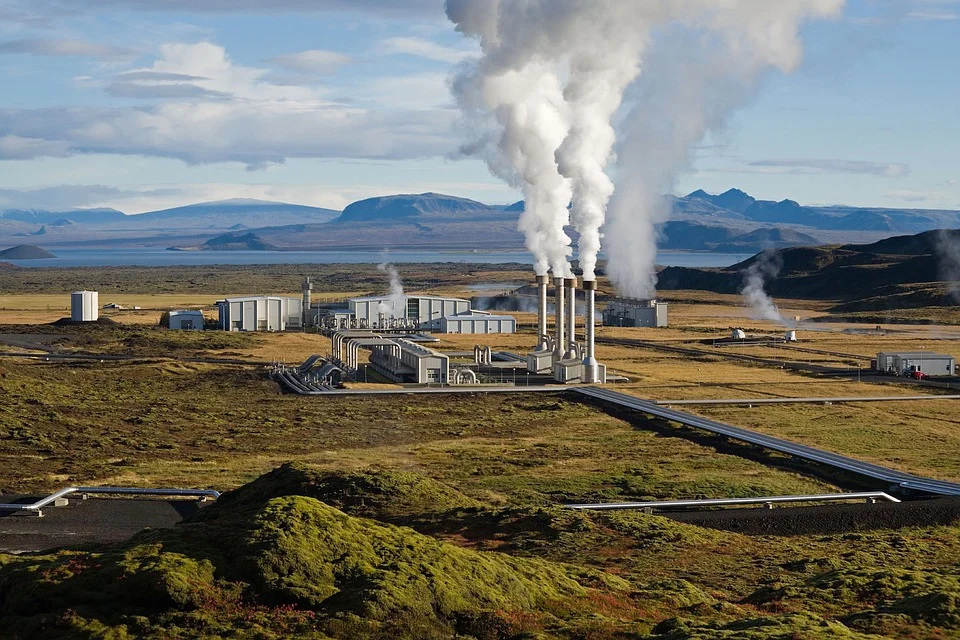
Geothermal energy is a renewable, reliable, environmentally friendly, and a very green way to heat and cool your home (geothermal heat pumps).
Solar and wind energy are largely considered unpredictable. You can’t always estimate how much energy can be produced on a given day. With geothermal, however, it’s very predictable and reliable.
These are just a few of the upsides to geothermal energy. Let’s explore these and more in greater detail.
Pros and Cons of Geothermal Energy
1. Geothermal Energy is Renewable
For as long as the earth exists, there will be geothermal energy to harness.
This puts it in the renewable category along with solar and wind, and it will be around until the sun swallows us whole in about another 5 billion years.
The hot reservoirs used to extract geothermal energy are natural resources within the earth. Unlike fossil fuels such as coal and natural gas, they are naturally replenished by the heat of the earth.
This makes geothermal not only renewable but also sustainable.
There is a caveat to this that we’ll discuss in the cons, but for the most part, it is largely considered a renewable and sustainable resource.
2. Environmentally Friendly
Geothermal energy is most commonly referred to as a green energy source. This means its impact on the environment is minimal.
Producing geothermal energy does create some pollution, which we’ll discuss later in the cons. However, its carbon footprint is tiny in comparison to fossil fuel energy production.
Geothermal plants emit 99% fewer carbon emissions than fossil fuel plants.
They sometimes emit a little sulfur dioxide or carbon dioxide, natural elements found in geothermal water and steam.
The US government is currently investing in enhancing national geothermal power output because it’s seen as a great candidate for providing sustainable green electricity for the future.
3. Geothermal Energy is Reliable
Unlike solar and wind, geothermal energy is a very predictable source of energy.
Geothermal power plants have a power output that can be easily calculated with a high level of accuracy.
We don’t have to worry about the fluctuation of wind, overcast days, or total darkness. Geothermal energy can be produced around the clock with minimal interruption.
Most geothermal power plants operate at about 97% capacity around the clock. That’s nearly double the uptime on wind turbines and triple compared to most solar installations.
This is a very important factor to consider, and it means that geothermal energy is acceptable for meeting base load energy demand.
In simpler terms, people need a certain amount of energy during the day, and geothermal can reliably supply it without concern.
4. Doesn’t Require Fossil Fuel
Usually, when you think of power plants, you think of needing lots of fuel. Not the case for geothermal energy.
Similar to solar and wind, geothermal energy is produced by nature. It is not consumed, but rather it is harnessed and converted to electricity.
This goes back to it being a renewable and sustainable energy source.
The water or steam is piped out of the ground, the energy is extracted, then the water is piped back into the ground. Part of the energy produced powers the plant, so it’s a self-sustaining cycle.
It also means that we don’t have to worry about activities such as mining that come with a heavy price tag of pollution into the environment.
5. Heating and Cooling for Homeowners
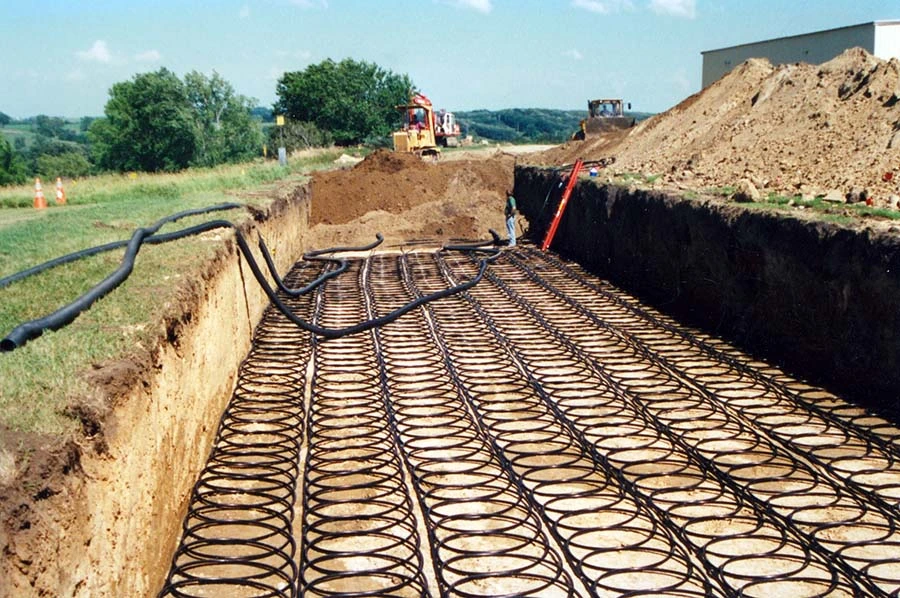
Over the last few years, there has been a significant increase in demand for geothermal heating and cooling for homes. This is accomplished with geothermal heat pumps.
This is a completely different way to use geothermal energy.
There is no electricity generated in the process. Rather, the constant temperature of the earth below the frost line is used to heat the home in the winter and cool the home in the summer.
Here’s how residential geothermal heating and cooling works.
- Water tubes are laid out and buried in the ground around 10 feet below ground level.
- A pump is installed in the home and the system is pressurized with water.
- As the water circulates through the ground it becomes the same temperature as the earth (about 50 degrees).
- When the water is circulated into the home it will help cool the home in the summer.
- When the water is circulated during the winter a little heat is added to bring it up to a comfortable temperature as it radiates heat into the home.
These nearly passive heating and cooling systems save a lot of money on electrical bills, and they decrease carbon footprint significantly.
6. Rapidly Evolving Technology
On par with other green energy sources, geothermal energy is at the forefront of exploration.
New technology continues to come out that improves the energy production process, which makes it a more attractive option as the years go by.
One of the more recent developments in geothermal energy is Enhanced Geothermal Systems (EGS). This could open the door for building scalable systems nearly anywhere in the world.
- The idea is that because the earth is hot everywhere, geothermal plants can tap into the heat and pump water down to be heated by the earth and then pumped back up.
- Even though the drilling would be deep, it’s minimally disruptive and doesn’t extract any natural resources from the earth.
- Small plants could be erected where needed with smaller steam feeds established through smaller piping systems to provide electricity in unserved or underserved areas.
Drilling through the earth’s crusts is not without it’s danger. This is one of the cons that we’re about to discuss below, so we’ll save that conversation for a bit later.
For now we want to focus on the convenience, scalability, and accessibility that this kind of power plant could bring around the globe.
Even better, the footprint of these plants is negligible. They’re mostly just pipes that sit above the ground’s surface with a small entry and exit point with turbines in the middle.
It will be interesting to see what researchers devise in the future as they develop safe and ecological ways to exploit geothermal energy.
Disadvantages of Geothermal Energy (Cons)
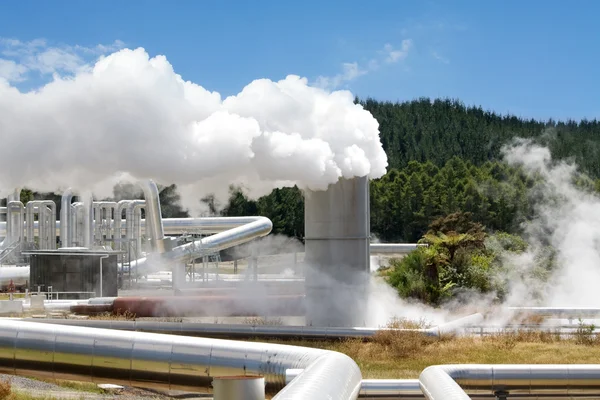
The cons of geothermal energy include difficulty with locating geothermal plants, possible environmental pollution, earthquake triggering, high cost, and the possibility that the earth is cooling.
Many people argue that the risk of causing geologic instability makes geothermal power plants not worth the risk.
Let’s investigate the cons to see the disadvantages of geothermal energy.
1. Geothermal Energy is Zone Specific
Probably the biggest disadvantage of geothermal energy is that it’s incredibly location specific.
We don’t really have the power to choose where we construct geothermal power plants, which leads to rather inconvenient locations being forced upon us.
As a result, there are only certain zones where geothermal power is an option. For areas like Northern Nevada, geothermal energy is a boon for areas like Reno and Carson City.
Northern California enjoys the only dry steam geothermal plant in the United States which provides affordable, reliable, clean electricity.
However, most areas don’t have access to geothermal energy. Many believe that this means that geothermal will never be a viable option for electricity, but new technology is changing that.
As new plants are developed that can heat existing water with geothermal heat, the option to bring clean geothermal energy elsewhere will become more of a reality.
That comes with its own risks, including geological disruptions which we’ll discuss soon.
2. Environmental Side Effects
While the production of geothermal energy typically doesn’t release any greenhouse gases, there are plenty below the Earth’s surface that can’t be ignored.
Gases are present in the crust of the earth and in geothermal water reservoirs. When these are dug up the gases are released into the atmosphere.
- Carbon dioxide
- Methane
- Nitrous oxide
- Hydrogen sulfide
Even so, the emissions from geothermal power plants are 99% less than fossil fuel plants.
While these environmental side effects are considered a con, they don’t have nearly the impact of the energy sources we currently use today.
3. Causes Geologic Instability
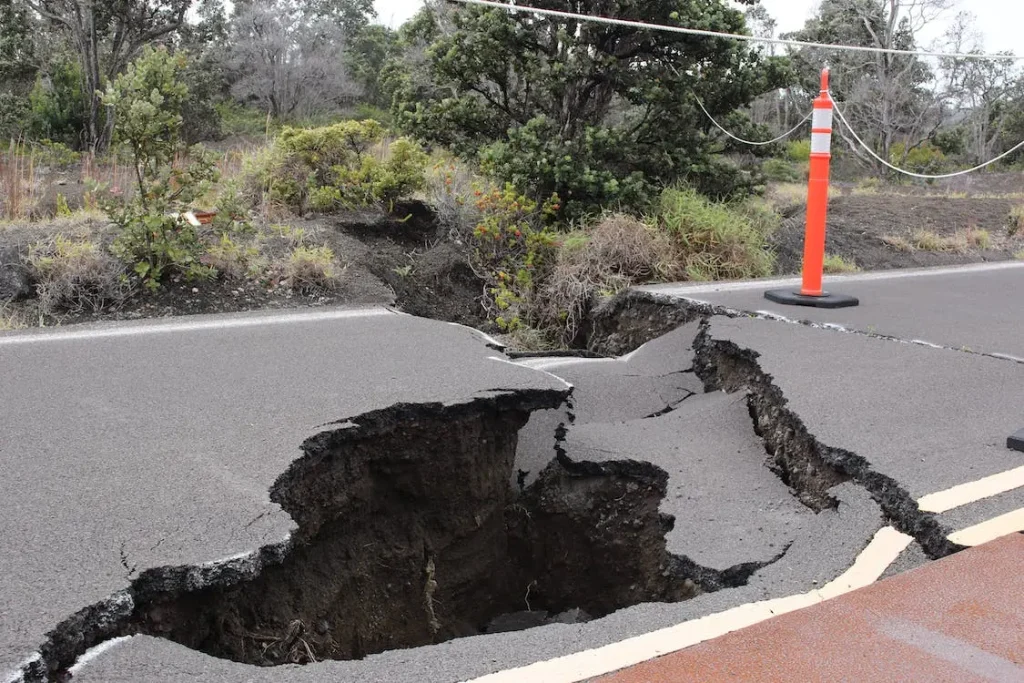
Geothermal energy has become notorious for triggering earthquakes.
Anytime you’re drilling deep into the Earth’s surface, there’s the potential of altering its structure. This can lead to tectonic shifts large enough to cause earthquakes.
Most areas that have natural geothermal reserves experience frequent earthquakes anyway, but geothermal plants make it worse.
The new Enhanced Geothermal Systems (EGS) tend to have more impact on earthquakes because of the way they’re installed.
- Researchers try to determine areas where the rock can be fractured to allow access to geothermal energy without disturbing any known faults.
- Once a safe area is located they drill and pump water into the earth with the aim of creating rock fractures that allow the water to flow down into the earth’s heat.
- These fractures can cause tiny earthquakes, but the problem is when they accidentally hit an existing fault.
- This can cause geological movement that results in a large earthquake.
This is exactly what happened in Pohang, South Korea, where a new geothermal plant caused weeks of strong earthquakes including a 5.5 magnitude that left dozens injured and thousands displaced.
The water that was being pumped into the ground released the pressure on an existing fault that was normally kept in place by the density of the crust.
For the most part, these earthquakes aren’t dangerous due to the location of most geothermal power plants, but it is a reality that has to be planned around.
However, any type of natural disaster usually comes with the potential for life-threatening accidents.
4. High Upfront Costs.
With geothermal, there are high price tags that have to be considered.
First is the cost of building a commercial power plant.
Similar to nuclear, they can be very expensive. You can imagine that drilling holes several miles into the earth’s surface can be rather pricy and time-consuming.
According to the Department of Energy, it costs about $2,500 per kW to build. So, a typical 3,000 MW geothermal power plant would cost about $75 million dollars to construct.
The unfortunate reality is that geothermal energy is struggling to compete with other energy production methods.
Even though you save money utilizing it in the long run, the high upfront costs are a major deterrent.
However, if your area has abundant geothermal energy it’s a clean way to generate electricity while causing minimal impact on the earth.
Much like wind farms, most geothermal energy users are given significant subsidies to make use of the energy source.
5. Sustainability and Cooling Issues

Geothermal power is considered ultimately sustainable because we pump the used water back into the earth to be reheated, but it’s not quite so simple.
In theory, if hot water is pumped out of the earth faster than it can reheat when it’s pumped back into the reservoir, then efficiency is decreased even if the water isn’t lost during the process.
Another factor that we haven’t really discussed as a global population is that the earth is cooling more rapidly than previously thought.
Some geothermal energy naysayers fear that as the earth cools, even tiny amounts, the water that is pumped back up from geothermal wells is not as hot as it was before.
These believe that geothermal wells are contributing to the earth’s cooling cycle which will result in our molten core solidifying sooner than it should. Even if they’re right we have a few million years left.
Geothermal plants that use alternate working fluids to create steam aren’t so susceptible to the cooling water because the working fluid has a low boiling point.
Home Geothermal Energy Pros and Cons
Home geothermal energy is more of a passive system than commercial electrical generators powered by geothermal energy. It does not generate electricity.
A home geothermal system uses a geothermal heat pump to pressurize and circulate water in tubes that run underground.
The water equalizes with the temperature of the earth and then radiates heat or cold into the home.
Pros of Home Geothermal Energy
The pros of a home geothermal energy system are numerous.
- The system saves a ton of grid energy – you use much less than normal.
- The system saves money on electricity bills.
- It will cool the home in the summer because the earth is cooler than the air.
- It will help warm the home in the summer because the earth is warmer than the air.
It can’t do its job completely on its own if you want the home to stay warm enough in the winter. However, as a passive supplemental system, it’s quite ingenious.
This Old House did this great segment explaining various types of geothermal heating and cooling systems that can be installed for residential use.
Cons of Home Geothermal Energy
There aren’t very many cons, but there are a few to think about it before you start digging in the yard.
- The system typically requires a large part of the yard must be dug up to place the water tubing.
- If there is a break in the tubes it’s really hard to figure out where the problem is, and replacement means you’ll be digging up the yard again.
- The cooling works pretty well because the water coming into the home is about 50 degrees. However, in the winter that’s not nearly warm enough to make the home comfortable, so supplemental heat must be used.
- The geothermal heat pump requires electricity to run the pump, circulation fans, and compressor. So, you’re still grid-dependent unless you can run it on solar.
The other drawback to home geothermal energy systems is that if the power goes out your system is down too. However, that’s not unusual unless you’re using a propane heater or wood stove.
What is a Geothermal Greenhouse?
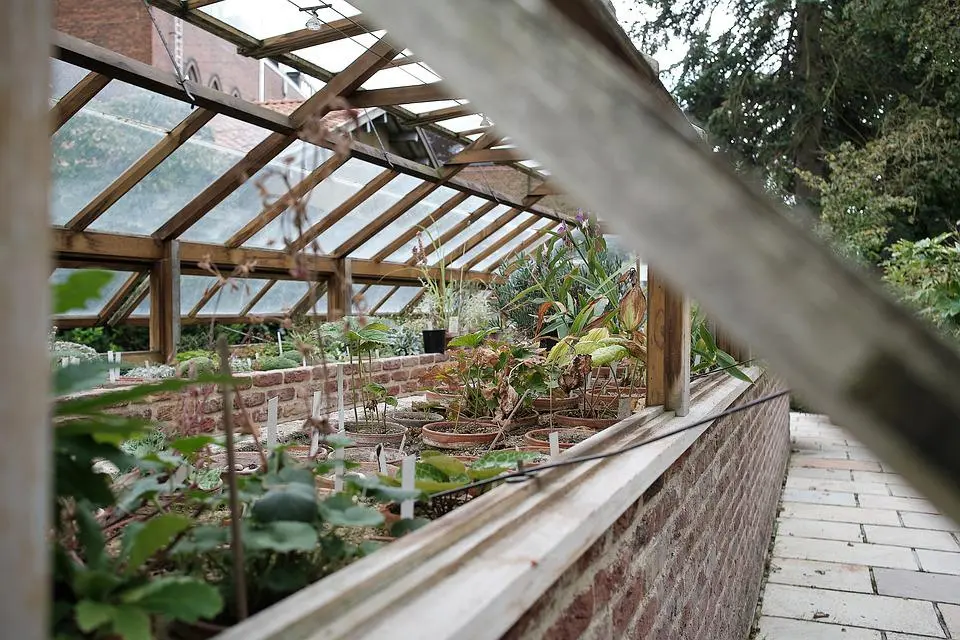
A geothermal greenhouse is a building where plants are grown and protected from winter cold by heat gained from the ground where the temperature is stable.
There are 2 types of geothermal greenhouses.
- Circulating air – air is circulated through buried pipes and into the greenhouse. When the air is underground it comes up to the temperature of the earth, usually around 50 degrees. The warmed air is circulated into the greenhouse to protect the plants in cold weather.
- Circulating water – water is circulated through buried pipes to equalize the temperature. The water is then circulated through the greenhouse where it radiates heat to maintain a warmer temperature in the greenhouse.
Both types of systems are a bit labor-intensive to install, but the payoff is the ability to maintain a more consistent and safe temperature in the greenhouse while using minimal energy.
Electricity is needed to run the pumps and fans to circulate the air or water, but these can be powered on solar panels if the climate permits.
Final Thoughts
Solving our long-term energy demands needs a combination of different renewable, clean, and green energy sources that we can use for generations to come.
Geothermal energy is without a doubt one of those energy sources that must be considered.
Besides being renewable and mostly sustainable, it’s also very reliable, doesn’t require fuel, and has a strong upside for residential homeowners.
Geothermal energy’s downsides include high initial investments, very location-specific energy, and some potentially dangerous environmental side effects, including earthquakes.
After reading through the lists of pros and cons, what are your thoughts? Let us know in the comments below!

